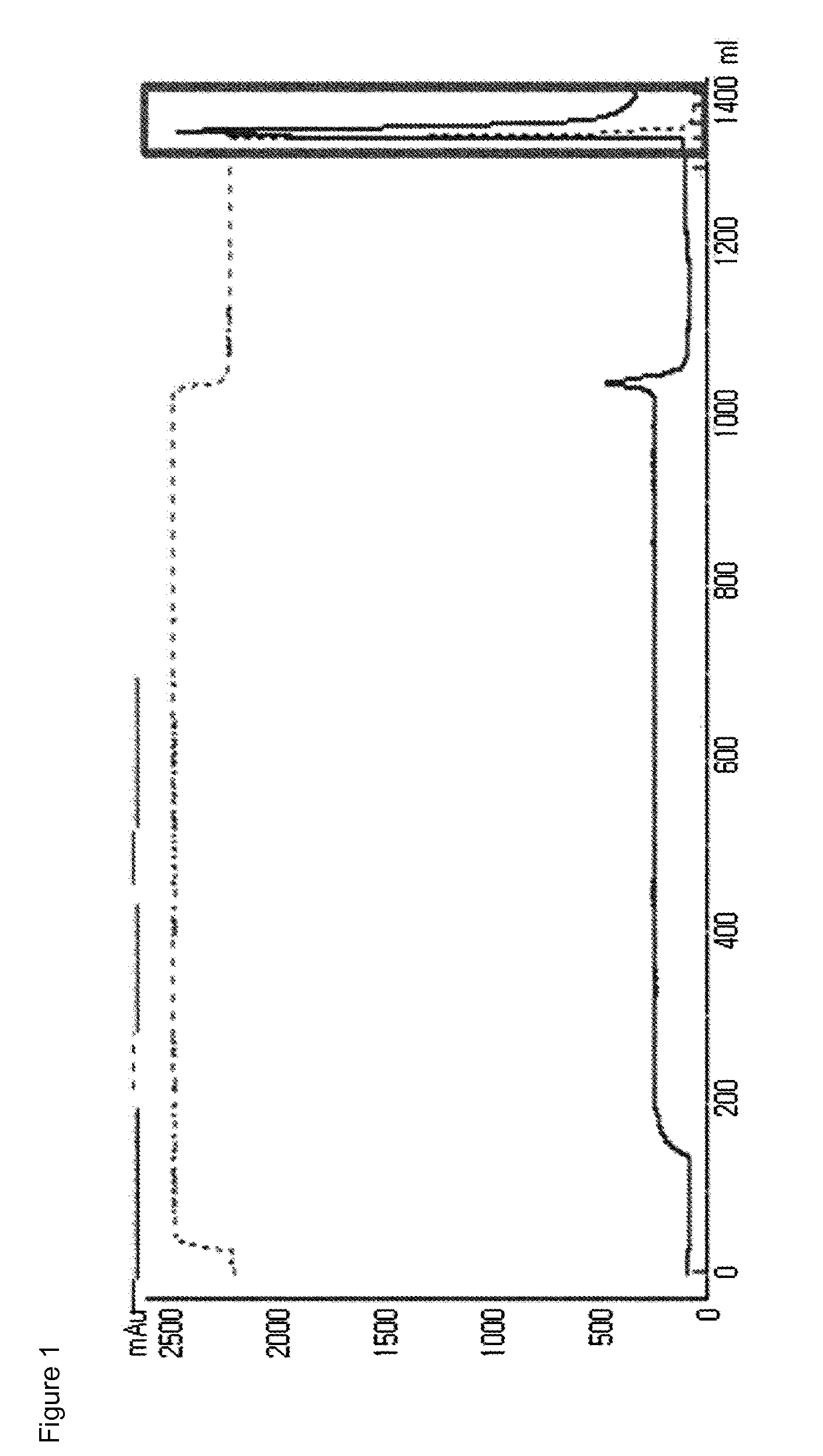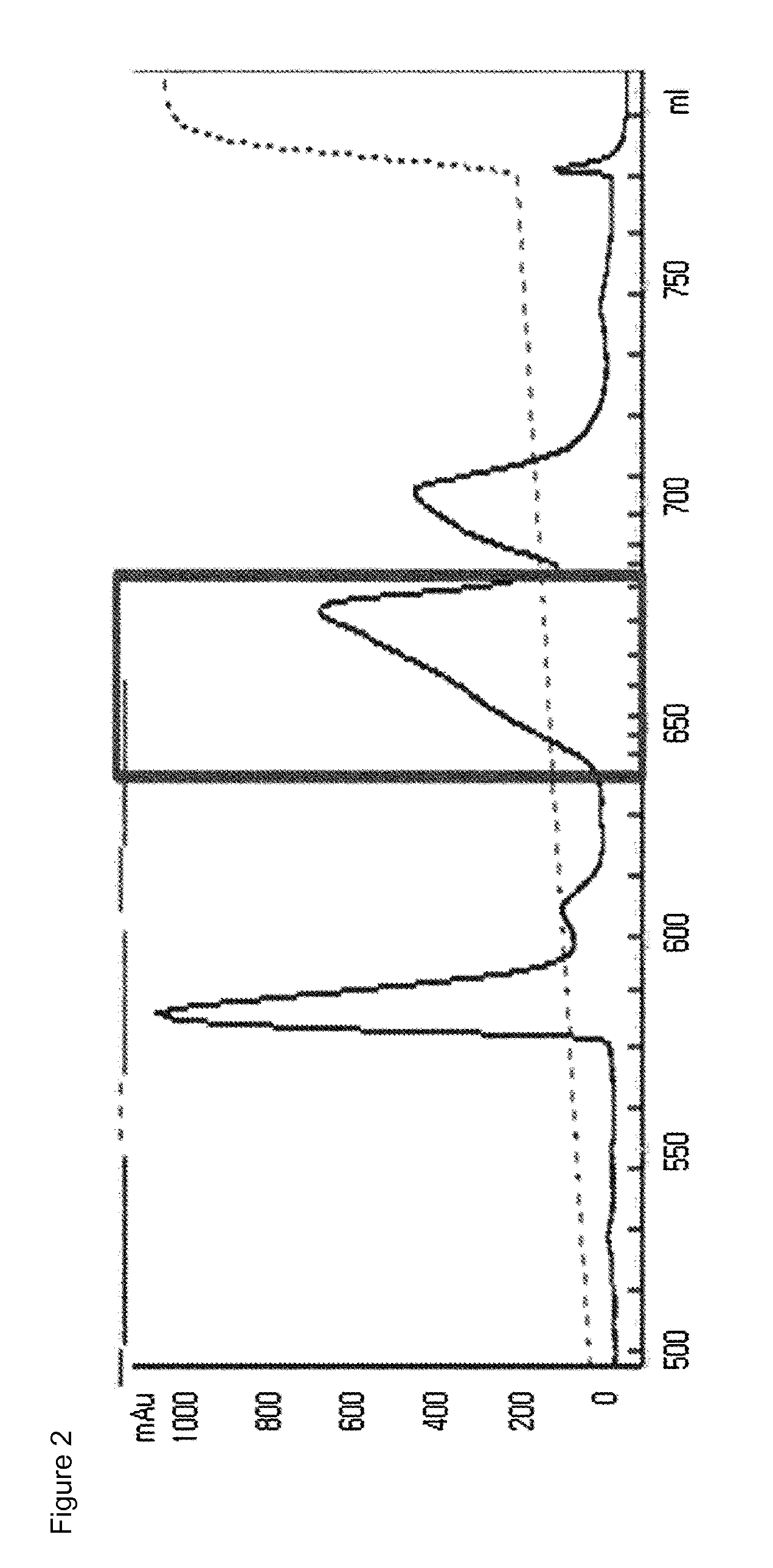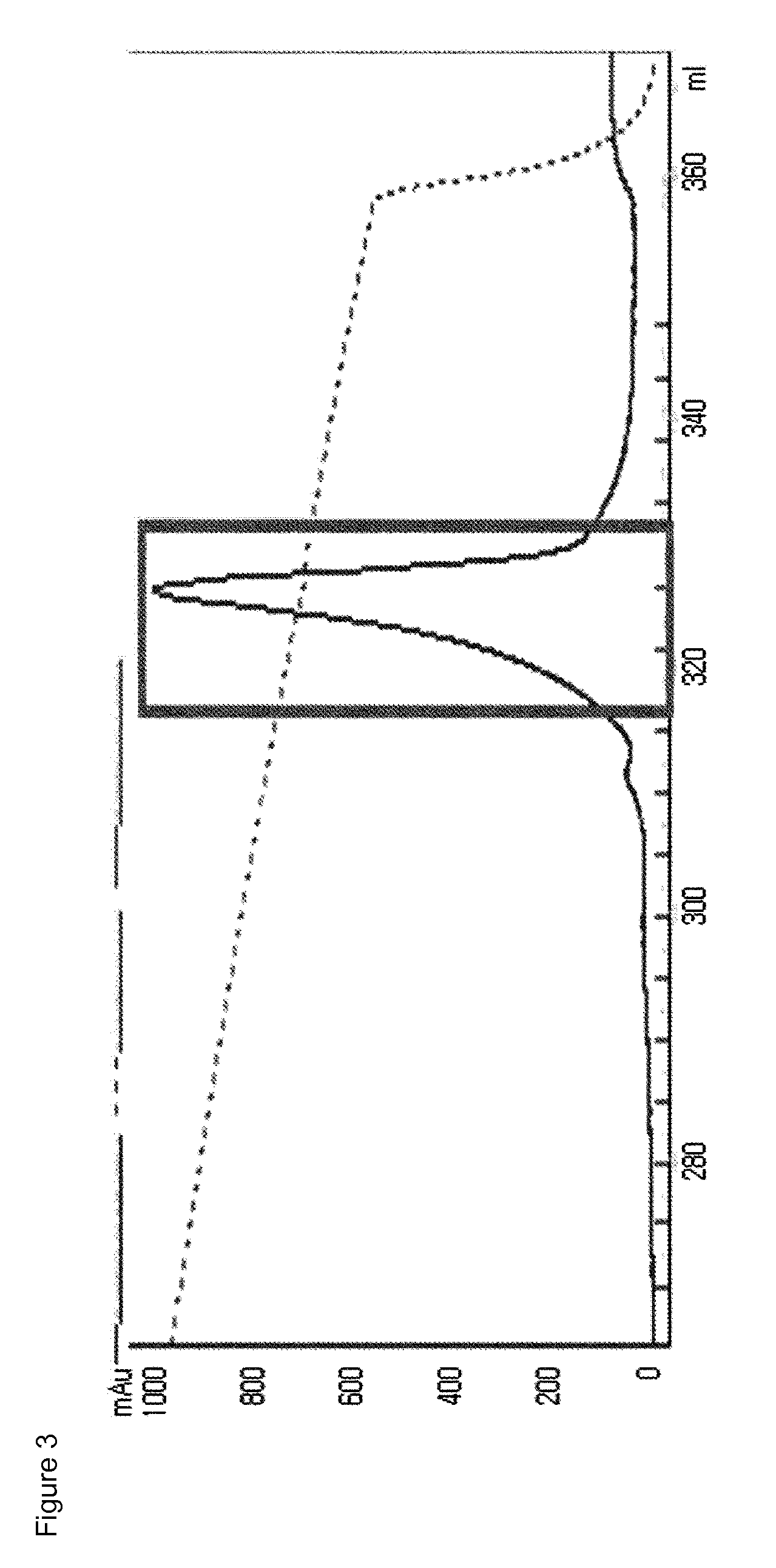Site-specific GLP-2 conjugate using an immunoglobulin fragment
a glucagon-like peptide and immunoglobulin technology, applied in the field of site-specific glp-2 conjugate, can solve the problems of glp-2 still having limitations in being developed into a commercial drug, nutritional deficiencies, and possible death, and achieve long-lasting in vivo therapeutic effect, high binding affinity, and long-lasting in vivo half-life
- Summary
- Abstract
- Description
- Claims
- Application Information
AI Technical Summary
Benefits of technology
Problems solved by technology
Method used
Image
Examples
example 1
Pegylation of Imidazo-Acetyl-GLP-2
[0106]Imidazo-acetyl GLP-2 (CA-GLP-2, A2G, 34C, American Peptide, U.S.A.) was reacted with 10K MAL-PEG-ALD PEG (heterobifunctional PEG having a maleimide and a aldehyde group at each end, NOF Inc., Japan), so as to pegylate the 34th cysteine residue (Cys34) of the CA-GLP-2. Here, the molar ratio of CA-GLP-2 to PEG was 1:3, and the reaction was performed at room temperature for 3 hours, with a peptide concentration of 3.5 mg / mL. Further, the reaction was carried out in a 50 mM Tris-HCl buffer in the presence of 20 mM sodium cyanoborohydride (SCB) as a reducing agent. After the reaction was completed, the resulting product, mono-pegylated CA-GLP-2-PEG complex was purified by chromatography using a SOURCE S column (LRC25, Pall Corporation) under the following conditions.
[0107]Column: SOURCE S (LRC25, Pall Corporation)
[0108]Flow rate: 4.0 ml / min
[0109]Gradient: eluent B 0% 5, Pall Corporation) by umM citric acid, pH 2.0+45% ethanol, B: A+1 M KCl)
example 2
Preparation of Imidazo-Acetyl-GLP-2(A2G, 34C)-PEG-Immunoglobulin Fc Conjugate
[0110]The mono-pegylated CA-GLP-2 (A2G, 34C) complex purified above was mixed with an immunoglobulin (IgG) Fc fragment (Korean Patent No. 10-725315) at a molar ratio of 1:6, followed by reacting them at 4° C. for 20 hours, with a peptide concentration of 20 mg / ml. At this time, the reaction was performed in a 100 mM potassium phosphate buffer (pH 6.0) in the presence of 20 mM SCB as a reducing agent. After the reaction was completed, the reaction mixture was subjected to three-step chromatography using a SOURCE Phe column (XK16, GE Healthcare), a SOURCE 15Q column (LRC25, Pall Corporation) and a SOURCE ISO (HR16, GE Healthcare) column under the following conditions.
[0111]Column: SOURCE Phe (XK16, GE Healthcare)
[0112]Flow rate: 2.0 ml / min
[0113]Gradient: eluent B 100%) GE HealthcmM Tris, pH 8.0; B: A+2.6 M NaCl)
[0114]Column: SOURCE 15Q (LRC25, Pall Corporation)
[0115]Flow rate: 5.0 ml / min
[0116]Gradient: eluent...
example 3
Measurement of In Vitro Binding Affinity of CA-GLP-2 (A2G, 34C)-10K PEG-Fc Conjugate to GLP-2 Receptor
[0121]In order to measure the efficacy of the CA-GLP-2 (A2G, 34C)-10K PEG-Fc conjugate (hereinafter, “GLP-2 conjugate”) prepared in Example 2, a method for measuring in vitro cell activity was used as follows. In this method, a Chinese hamster ovary (CHO) cell line, CHO / hGLP-2R being transformed to express a gene encoding human GLP-2 receptor was employed.
[0122]The CHO / hGLP-2R cells were sub-cultured 2 to 3 times a week, and were seeded on a 96-well plate at a concentration of 1×105 cells / well, followed by culturing for 24 hours. The thus cultured CHO / hGLP-2R cells were treated with native GLP-2 at a concentration of 1000 to 0.002 nM; a long-acting formulation of native GLP-2 (GLP-2-PEG-Fc conjugate, LAPS-GLP-2) at a concentration of 10000 to 0.02 nM; a long-acting formulation of a GLP-2 derivative via lysine-specific conjugation (LAPS-DA-GLP-2, LAPS-CA-GLP-2, LAPS-OH-GLP-2) at a co...
PUM
| Property | Measurement | Unit |
|---|---|---|
| pH | aaaaa | aaaaa |
| molecular weight | aaaaa | aaaaa |
| molecular weight | aaaaa | aaaaa |
Abstract
Description
Claims
Application Information
 Login to View More
Login to View More - R&D
- Intellectual Property
- Life Sciences
- Materials
- Tech Scout
- Unparalleled Data Quality
- Higher Quality Content
- 60% Fewer Hallucinations
Browse by: Latest US Patents, China's latest patents, Technical Efficacy Thesaurus, Application Domain, Technology Topic, Popular Technical Reports.
© 2025 PatSnap. All rights reserved.Legal|Privacy policy|Modern Slavery Act Transparency Statement|Sitemap|About US| Contact US: help@patsnap.com



